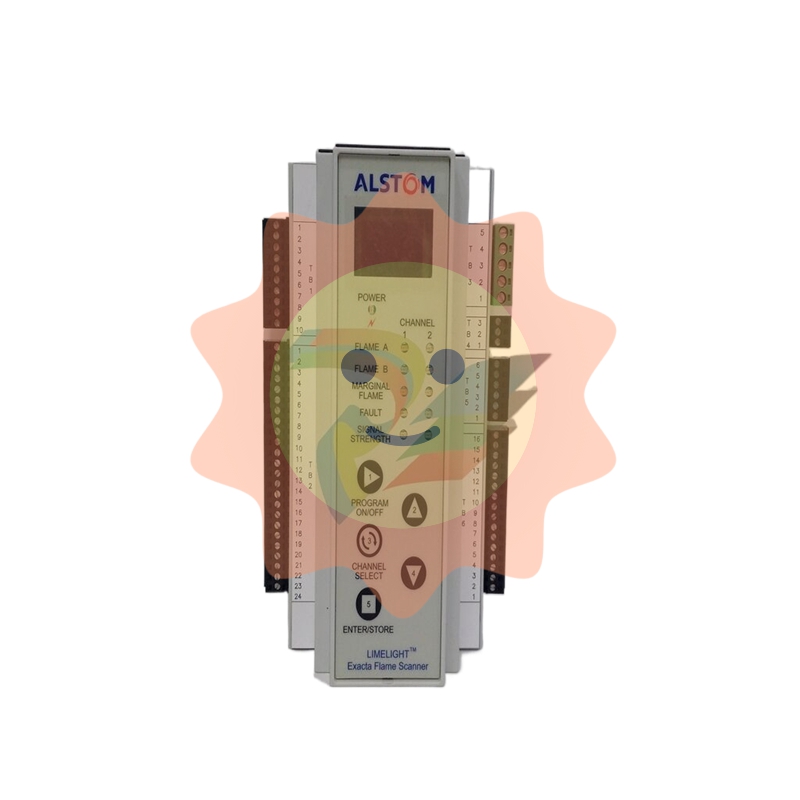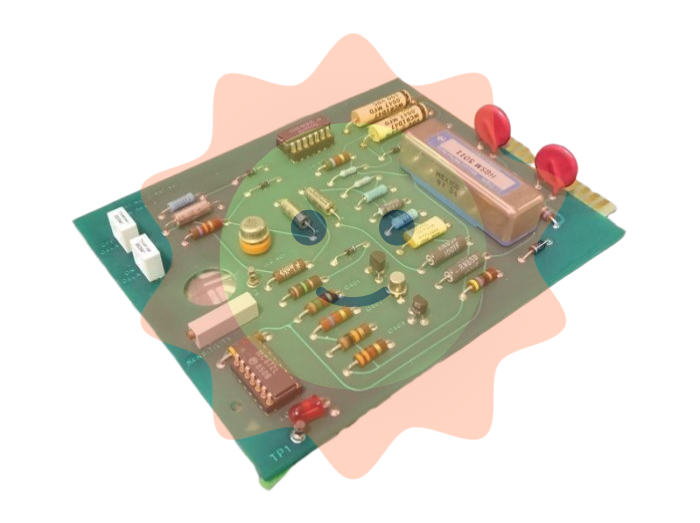What is the strategic position of artificial hydrogen production and hydrogen industry in China?
00 Introduction
The world is experiencing the third major transition period of the energy system from fossil energy to non-fossil energy such as hydrogen energy [1]. In 2017, China's energy production was 25×108 t of oil equivalent, and the consumption reached 31×108 t of oil equivalent, and the entire energy needs to import 20%, especially the oil import volume was 4×108 t, and its external dependence reached 70%, which had an adverse impact on energy security. In order to provide reference for China to realize the transformation of energy system and the strategic goal of "energy independence", the development status and development trend of hydrogen industry at home and abroad are reviewed, the development ways of artificial hydrogen production and hydrogen storage technology are discussed, and the strategic position of hydrogen industry is defined.
Hydrogen is widely distributed in nature, and only a very small amount of free hydrogen exists in the natural state. Industrial hydrogen refers to the product of combustible gaseous hydrogen produced on a large scale from industrial raw materials by certain means. This process of extracting industrial hydrogen from hydrogen-containing raw materials through energy input is called artificial hydrogen production, including hydrogen production from fossil fuels, hydrogen production from water decomposition, hydrogen production from biotechnology and solar energy [2]. Hydrogen energy as the chemical energy of hydrogen is the energy released in the process of physical and chemical changes, and is an important type of energy with secondary energy properties. This large-scale artificial hydrogen production and utilization of hydrogen energy industry is called the hydrogen industry, including upstream hydrogen production, midstream storage and transportation, and downstream applications. The hydrogen industry chain is based on the technical and economic correlation among various industrial departments in the hydrogen industry system, including the hydrogen industry value chain, the hydrogen industry enterprise chain, the hydrogen industry supply and demand chain and the hydrogen industry space chain.

In order to better read and understand the content of this paper, the author suggests to first define and clarify the above five basic concepts (industrial hydrogen, artificial hydrogen production, hydrogen energy, hydrogen industry, hydrogen industry chain), and thus establish the concept system of hydrogen industry. Hydrogen storage is one of the key technologies to realize the effective utilization of hydrogen energy, including high pressure gas hydrogen storage, low temperature liquid hydrogen storage, metal hydride hydrogen storage, organic compound hydrogen storage, microsphere hydrogen storage and carbon nanomaterials hydrogen storage. Based on large-scale low-cost hydrogen production and high-density hydrogen storage, the hydrogen industry application related to fuel cells will promote the development of energy transformation and new energy vehicles, distributed energy supply and other emerging industries, thereby changing the energy structure, and then realize the transformation of the whole industry chain from the energy supply side to the consumption side.
01 Development status of hydrogen industry
With the continuous development and gradual maturity of hydrogen energy application technology, as well as the continuous increase of global pressure to cope with climate change, we actively layout and force to promote the development of hydrogen industry.
1.1 The global hydrogen industry is taking shape
The global hydrogen industry is growing rapidly, with the market size growing from $187.082 billion in 2011 to $251.493 billion in 2017, a growth rate of 34.4% (Figure 1). Among them, the United States is the largest importer of industrial hydrogen, with a total import of $248 million in 2012-2016, while the Netherlands is the largest exporter of industrial hydrogen, with a total export of $342 million in 2012-2016.
Human society has experienced three industrial revolutions (Figure 2), and since the middle of the 20th century, with the fourth Industrial Revolution, the global transition to new energy has begun (Figure 3). Looking at the history of energy development, the three major energy upgrades reflect the "three economies" form. Watt's invention of the steam engine led to the first major conversion of firewood to coal, manifested as a "high carbon economy"; Daimler invented the internal combustion engine and completed the second major conversion from coal to oil and gas, presenting a "low-carbon economy"; The progress of modern science and technology and the requirements of environmental protection promote the third major transformation of traditional fossil energy to non-fossil new energy sources such as hydrogen energy, and the world may gradually enter the non-carbon "hydrogen energy era" [3-4].
1.2 Artificial hydrogen production mainly depends on fossil resources
The global industrial hydrogen market has a strong regional nature and has formed three regional maps: Asia-Pacific, North America and Europe. Fossil resources are currently the main raw materials for hydrogen production, among which coal gasification has great potential for development [5].
1.2.1 Industrial hydrogen production is regional
The Asia-Pacific region leads the world in industrial hydrogen production, followed by North America (Figure 4). In 2017, the production scale of industrial hydrogen in Asia Pacific was $107.136 billion, North America was $55.580 billion, and Europe was $51.757 billion. Rapid economic growth in developing countries such as China and India has led to strong demand for clean energy such as hydrogen energy in the Asia-Pacific region.
China's demand and production of industrial hydrogen is strong, showing an increasing trend year by year, and currently maintains a balance between supply and demand, and both demand and production rank first in the world. As a major country in the use of hydrogen energy in the world, China has maintained the first place in the world for 9 consecutive years since its production exceeded 1 000×104 t in 2009 (Figure 5).

1.2.2 Hydrogen production from fossil resources is dominant
At present, artificial hydrogen production raw materials are mainly fossil resources such as oil, natural gas and coal. Compared with other hydrogen production methods, the hydrogen production process of fossil resources is mature, and the raw material price is relatively low, but it will emit a lot of greenhouse gases and pollute the environment.
In 2017, more than 96% of the world's major artificial hydrogen production feedstock was derived from thermochemical reforming of traditional fossil resources, and only about 4% was derived from electrolytic water (Figure 6). Coal and natural gas are the main raw materials for artificial hydrogen production in China, accounting for 62% and 19% respectively (Figure 7). Hydrogen production by electrolysis of water occupies a special place in the Japanese hydrogen industry, and its capacity for hydrogen production by brine electrolysis accounts for 63% of the total capacity of all artificial hydrogen production in the country.
1.2.3 Hydrogen production from coal gasification has great development potential
The gasification of coal refers to the reaction of coal and gasification agent into gas products under the condition of high temperature and atmospheric pressure or pressure. With the development of coal-to-syngas and coal-to-oil industries, the production of coal-to-hydrogen has increased year by year, with a large scale and low cost, and the cost of hydrogen production is about 20 yuan /kg. In addition, in the production process of chemical products (including synthetic ammonia, methanol, etc.), the recovery of industrial hydrogen with purity greater than 99% from hydrogen-containing relaxation gas is also increasingly mature and increasing.
Underground coal gasification for hydrogen production has great development potential and is also an effective way to clean coal transformation and utilization. Coal underground gasification hydrogen production technology has the advantages of high resource utilization rate and less surface environmental damage, which conforms to the resource structure characteristics of "rich coal, poor oil and little gas" in China, but this technology is still in the exploration stage, and there is a long distance from commercial utilization.
1.3 Efficient hydrogen storage and transportation technology is the focus of development
Safe and efficient hydrogen storage and transportation technology is the key to realizing the practical application of hydrogen energy [6-7]. Hydrogen energy storage methods mainly include low temperature liquid hydrogen storage, high pressure gaseous hydrogen storage, solid hydrogen storage and organic liquid hydrogen storage, etc. Different hydrogen storage methods have different hydrogen storage densities, among which gaseous hydrogen storage mode has the smallest hydrogen storage density, and metal hydride hydrogen storage mode has the largest hydrogen storage density (FIG. 8).
1.3.1 Low temperature liquid hydrogen storage cost is high
The large-scale and cheap production, storage and transportation of industrial hydrogen is the basis of realizing the practical utilization of hydrogen energy. Gaseous hydrogen is liquid at -253 ° C, and the density of liquid hydrogen is 845 times that of gaseous hydrogen. The weight ratio of liquid hydrogen storage is between 5.0% and 7.5%, and the volume capacity is about 0.04 kgH2/L. Hydrogen liquefaction is expensive and energy consuming (4 to 10 kWh/kg), accounting for about one-third of the cost of liquid hydrogen production. Liquid hydrogen storage vessels need to have very high insulation capacity to avoid boiling of liquid hydrogen.
At present, liquid hydrogen is mainly used as the fuel of space rocket propulsion, and its storage tank and trailer have been applied in China's aerospace and other fields. With the development of the human space program, liquid hydrogen storage vessels are becoming larger, and it is now possible to build large liquid hydrogen adiabatic storage tanks with storage capacity of more than 1,000 m3.
1.3.2 High pressure gaseous hydrogen storage technology is mature
High-pressure gaseous hydrogen storage is the most commonly used and mature hydrogen storage technology at present, and its storage method is to compress industrial hydrogen into a high-pressure vessel [8]. The high pressure gaseous hydrogen storage device mainly includes fixed hydrogen storage tank, long tube cylinder, long tube bundle, cylinder group and vehicle hydrogen storage cylinder. The steel cylinder is the most commonly used high-pressure gaseous hydrogen storage vessel, which has the advantages of simple structure, low energy consumption for compressed hydrogen preparation, fast filling and discharge speed, etc., but there are some shortcomings such as poor safety performance and low volume specific capacity. At present, the hydrogen refueling stations that have been built and are under construction in China generally use long tube cylinder group hydrogen storage equipment.

1.3.3 Solid-state hydrogen storage technology is not mature
Solid hydrogen storage is the most potential for development of a hydrogen storage method, can effectively overcome the high pressure gas and low temperature liquid hydrogen storage methods of insufficient, with large volume density of hydrogen storage, easy operation, convenient transportation, low cost, high safety, suitable for the volume requirements of more stringent occasions, such as hydrogen fuel cell vehicles. Solid hydrogen storage technology can be divided into physical adsorption hydrogen storage and chemical hydride hydrogen storage. The former can be divided into metal-organic framework (MOFs) and nanostructured carbon materials. The latter can be divided into metal hydrides such as titanium series, magnesium series, zirconium series and rare earth, as well as non-metallic hydrides such as borohydrides and organic hydrides.
Metal hydride hydrogen storage has the advantages of high hydrogen storage density, high purity, high reliability (no high pressure or low temperature conditions) and simple hydrogen storage process, the main principle is to select a suitable metal hydride, under low pressure conditions to combine hydrogen with another substance (hydrogen storage alloy) into a quasi-compound state. At present, hydrogen storage of metal hydrides is still in the research stage and has not been commercialized, which is mainly restricted by the following factors: (1) The high price of hydrogen storage alloys; (2) The structure is complex, because the hydrogen storage process will release a lot of heat, so the heat transfer equipment must be added in the storage; ③ The stability of hydride itself is poor, easy to form harmful impurities, after repeated use, the performance is significantly reduced; The hydrogen storage quality is relatively low, if measured by mass, only 2% to 4% of industrial hydrogen can be stored.
1.3.4 Hydrogen storage in organic liquids has attracted much attention
The hydrogen storage technology of organic liquid is realized by reversible hydrogenation and dehydrogenation reaction of unsaturated liquid organic matter. This hydrogen storage method has the advantages of high quality, high volume hydrogen storage density, safety, easy long-distance transportation and long-term storage. Organic liquid hydrogen storage technology is still in the research and development stage, and there are still some shortcomings such as demanding technology, high cost, low dehydrogenation efficiency and easy coking deactivation. The equipment cost of catalytic hydrogenation and dehydrogenation unit is high, the dehydrogenation reaction needs to be completed under the condition of low pressure and high temperature heterogeneous, limited by heat and mass transfer and reaction equilibrium limit, the dehydrogenation reaction efficiency is low and side reactions are prone to occur, resulting in the hydrogen product impurity. In addition, under high temperature conditions, the pore structure of dehydrogenation catalyst is easily destroyed, resulting in coking deactivation.
1.4 Hydrogen industry infrastructure
The industrial hydrogen transportation method is mainly the pipeline transportation of high-pressure gaseous or liquid hydrogen, and the basic research on the compatibility of pipeline steel and high-pressure hydrogen needs to be carried out in the long-distance pipeline, and the pipeline operation management method needs to be innovated to realize the construction of long-distance, high-pressure and large-scale hydrogen transportation pipelines.
1.4.1 Pipeline hydrogen transport is in its infancy
The technology of "hydrogen blending" and "hydrogen oil transportation" in pipeline is an important link to realize long-distance and large-scale hydrogen transportation. Global pipeline hydrogen transport started early, but the development is slow. Europe's long-distance pipeline hydrogen transport has lasted for more than 80 years, and currently has a total length of about 1 500 km of hydrogen transport pipelines, of which the length of nearly 400 km of France - Belgium hydrogen pipeline is the longest in the world. The length of the existing hydrogen pipeline in the United States is 720 km, far less than the length of its natural gas pipeline (208×104 km). China has a number of hydrogen pipeline in operation, such as Sinopec Luoyang refinery Jiyuan-Luoyang hydrogen pipeline length of 25 km, the annual gas volume of 10.04×104 t; The total length of the Wuhai-Yinchuan coke oven gas transmission pipeline is 216.4 km, with an annual gas transmission capacity of 16.1×108 m3, which is mainly used for conveying coke oven gas and hydrogen mixture.
1.4.2 Hydrogen-oil joint construction of hydrogenation station
With the continuous expansion of the hydrogen industry market, the hydrogen industry chain is tending to be constantly improved. At present, with the rapid development of hydrogen fuel vehicles, the demand for industrial hydrogen has increased, and the construction of hydrogen refueling stations has accelerated accordingly. By the end of 2017, 328 hydrogen refueling stations were in operation worldwide, including 139 in Europe, 118 in Asia, 68 in North America, and 1 each in South America, Australia, and Dubai.

The Blue Book of China's Hydrogen Energy Industry Infrastructure Development (2016) has made plans for the medium and long term hydrogenation station construction and the development goals of fuel cell vehicles in China, and it is expected that 100 hydrogenation stations will be built in China by 2020, and 1,000 will be built in 2030. As of February 2018, a total of 31 hydrogen refueling stations have been built or are under construction in China, of which 12 are in operation.
The main facilities of the hydrogen refueling station include hydrogen storage device, compression equipment, filling equipment and station control system. Currently, the construction cost of a hydrogen fueling station ranges from $2 million to $5 million, with the compressor being the most expensive, accounting for about 30% of the total cost (Figure 9). The construction cost of hydrogen refueling stations in China is relatively low, ranging from $2 million to $2.5 million (35 MPa refueling capacity). Therefore, it is necessary to speed up the process of localization of industrial hydrogen compressors, reduce the cost of hydrogenation station construction, and promote the development of hydrogen industry.
The author predicts that the global hydrogen refueling stations will enter a stage of rapid development, and the number of global hydrogen refueling stations will exceed 435 by 2020 and more than 1,000 by 2025. At the same time, the feasibility study of the joint construction of hydrogen refueling stations and gas stations should be strengthened, such as the joint construction model adopted by Germany, Japan and other countries, and the joint construction test of multiple hydrogen refueling stations and gas stations carried out in Yunfu, Guangdong Province, China, in 2017. In the future, it is likely that there will be a "four-station joint construction" model of hydrogen refueling stations, gas stations, filling stations, and charging stations.
02 Development prospect and strategic position of hydrogen energy
Hydrogen energy is recognized as a clean energy, known as the most promising secondary energy in the 21st century. Hydrogen energy will play an important role in solving the problems of energy crisis, global warming and environmental pollution, and will also become a strategic choice to optimize the energy consumption structure and ensure the security of national energy supply. It is predicted that the oil refining industry, new energy vehicles and clean energy power generation will be the largest terminal market for hydrogen energy utilization, of which the amount of industrial hydrogen in the global oil refining industry will account for 90% of the total global industrial hydrogen consumption. With the increasingly strict requirements of fuel environmental protection, refinery hydrofining will require more industrial hydrogen to produce low-sulfur clean fuel, which will greatly stimulate the rapid growth of industrial hydrogen demand.
- EMERSON
- Honeywell
- CTI
- Rolls-Royce
- General Electric
- Woodward
- Yaskawa
- xYCOM
- Motorola
- Siemens
- Rockwell
- ABB
- B&R
- HIMA
- Construction site
- electricity
- Automobile market
- PLC
- DCS
- Motor drivers
- VSD
- Implications
- cement
- CO2
- CEM
- methane
- Artificial intelligence
- Titanic
- Solar energy
- Hydrogen fuel cell
- Hydrogen and fuel cells
- Hydrogen and oxygen fuel cells
- tyre
- Chemical fiber
- dynamo
- corpuscle
- Pulp and paper
- printing
- fossil
- FANUC
- Food and beverage
- Life science
- Sewage treatment
- Personal care
- electricity
- boats
- infrastructure
- Automobile industry
- metallurgy
- Nuclear power generation
- Geothermal power generation
- Water and wastewater
- Infrastructure construction
- Mine hazard
- steel
- papermaking
- Natural gas industry
- Infrastructure construction
- Power and energy
- Rubber and plastic
- Renewable energy
- pharmacy
- mining
- Plastic industry
- Schneider
- Kongsberg
- NI
- Wind energy
- International petroleum
- International new energy network
- gas
- WATLOW
- ProSoft
- SEW
- wind
- ADVANCED
- Reliance
- YOKOGAWA
- TRICONEX
- FOXBORO
- METSO
- MAN
- Advantest
- ADVANCED
- ALSTOM
- Control Wave
- AB
- AMAT
- STUDER
- KONGSBERG
- MOTOROLA
- DANAHER MOTION
- Bentley
- Galil
- EATON
- MOLEX
- Triconex
- DEIF
- B&W


email:1583694102@qq.com
wang@kongjiangauto.com

















































